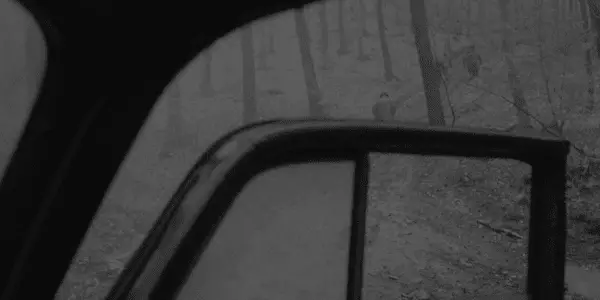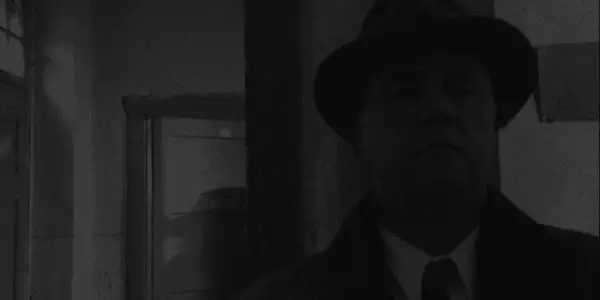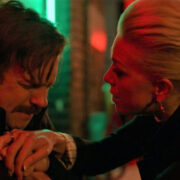TWILIGHT: The Goodness Of Man In An Irredeemable World

Soham Gadre is a writer/filmmaker in the Washington D.C. area.…
There aren’t a lot of movies where, from the first few moments, I begin to realize I am watching something truly special. It’s even more remarkable when it comes to my acknowledgment seemingly out of nowhere. I had no idea of who György Fehér was before this year. I had no idea that he had a close affiliation with one of my favorite filmmakers of all time Bela Tarr, though it did probably add a level of positive anticipation to discovering his work.
Fehér’s Twilight, a bleak and unforgivingly decelerated noir film from the 1980s, draws out its criminal investigation to bring in the mood of its tragedy to great heights. It’s an effectively compassionate film because it incorporates time and pace for the lamentation of the tragedy that sparks its narrative. There are elongated sequences of the grays and blacks of Hungary’s countryside that creep into you, that instill within you both a sorrow and guilt of the emptiness of the world, a stillness that follows from death.
Deadening Silence
Twilight is remarkable in the same way Tarr’s films are – to say that they are similar is not a hackneyed slapping together of two Hungarian auteurs for the sake of it. Fehér has actually worked extensively with Tarr (most prominently as a co-writer on Passion) and also with Tarr’s collaborators (cinematographer Miklos Gurban also did Werkmeister Harmonies). From the get-go, there are so many camera movements and durational orchestrated sequences that draw direct comparisons to Damnation, Satantango, and The Man from London.

Fehér’s use of long dolly shots both change perspective over long conversations to draw attention to various details within a single sequence like Tarr, but in the mood of a noir, create terrifying sequences that both hide and reveal figures from off the frame. Information and sound are both sources of fear and anticipation. The deadening silence that takes over the movie between sequences of its perfectly soul-aching music (no composer is listed in the credits) drones on in shots of leafless trees, grey skies, and vast expanses of fields, marked in some frames by small graves, no doubt those of the three murdered girls at the film’s center.
Sequences of Beauty and Terror
The bleakness of Fehér’s film is not to be mistaken for misery. There is beauty in the image here that counteracts the terror. The camera movements, akin to Tarr, are fluid and composed so meticulously to the rhythms of each situation, it’s hard to actually detect how the image seamlessly composes around its characters. In the interrogation scene, the camera deliberately ceases its movement as the suspect stumbles on his words or remains silent to certain questions, but then resumes as the interrogation’s momentum picks up again.

These moments show Fehér’s consciousness around the time and pace of his own movie. He creates sequences of frustrating opaqueness and then shatters them to open up the space but with hardly any clues to grab onto. Each indoor sequence juxtaposed with the never-ending expanse of the countryside, with that music always playing, creates a sensation of listlessness. In the wake of tragedy, Fehér’s Twilight forgoes easy solutions and commands us to consider the terror of ambiguity.
Conclusion
Twilight is remarkable, not only because of its careful compositions but because it’s a movie that is at once empathetic and compassionate and also cynical about the limits of justice. It is a movie that at once believes in the goodness and righteousness of certain people as much as it believes in the apathy of the systems they operate in. Fehér has created a masterpiece that continues the reputation of Hungary’s 80s and 90s cinema as a goldmine.
Twilight will be released in limited theaters on June 1st
Watch Twilight
Does content like this matter to you?
Become a Member and support film journalism. Unlock access to all of Film Inquiry`s great articles. Join a community of like-minded readers who are passionate about cinema - get access to our private members Network, give back to independent filmmakers, and more.
Soham Gadre is a writer/filmmaker in the Washington D.C. area. He has written for Hyperallergic, MUBI Notebook, Popula, Vague Visages, and Bustle among others. He also works full-time for an environmental non-profit and is a screener for the Environmental Film Festival. Outside of film, he is a Chicago Bulls fan and frequenter of gastropubs.











